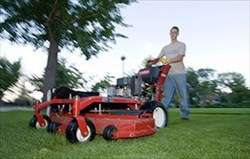Most of America's poor have jobs, study finds

The majority of the United States' poor aren't sitting on street corners. They're employed at low-paying jobs, struggling to support themselves and a family.
In the past, differing definitions of employment and poverty prevented researchers from agreeing on who and how many constitute the "working poor."
But a new study by sociologists at BYU, Cornell and LSU provides a rigorous new estimate. Their work suggests about 10 percent of working households are poor. Additionally, households led by women, minorities or individuals with low education are more likely to be poor, but employed.
Science magazine says the data from this study is relevant to the upcoming presidential election, as candidates discuss ways to help the working poor move out of poverty. Understanding the size and characteristics of the group makes this goal more realistic.
BYU professor Scott Sanders says the findings dispel the notion that most impoverished Americans don't work so they can rely on government handouts.
"The toxic idea is if we clump all those people together and treat them as the same people, then we don't solve the real problem that the majority of people in poverty are working, trying to improve their lives, and we treat them all as deadbeats," Sanders.
Working poor is the term used to describe individuals or families who hold jobs, but can't break out of poverty. No standards currently exist for determining exactly who qualifies as working poor, so previous estimates vary widely in their results. This study compared 126 different measures of working poverty using 2013 population data. The authors found the most useful representation is determined when a head of household works at least half time and the household income is below 125 percent of the official poverty line.
"Having a unifying line saying we're all measuring working poverty the same way is important before we can see how any changes or improvements are made," Sanders said. "You can't fix a problem until you know what is the problem."
The study estimates that between 6.4 and 8 million heads of families classify as working poor, which is actually less than the U.S. Bureau of Labor Statistics' 2011 estimate of 10.6 million.
Accurate data on the working poor is timely for current political dialogue. Recent months have seen low-wage workers staging "Fight for $15" rallies to raise the minimum wage nationwide. Whether or not a minimum wage hike would fix the problem is still up for debate, Sanders says. But one thing is for certain, the status quo is not the answer.
"It's been the push, that if we can get people working, then they'll get out of poverty," Sanders said. "But we have millions of Americans working, playing by the rules, and they're still trapped in poverty."
More information: "America's Working Poor: Conceptualization, Measurement, and New Estimates Work and Occupations." 0730888415573635, first published on April 9, 2015 DOI: 10.1177/0730888415573635
Provided by Brigham Young University


















